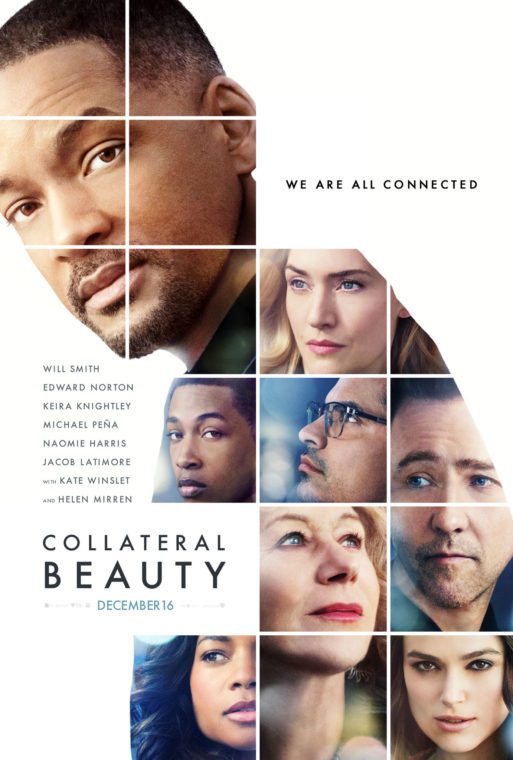 Sitting in the movie theater, I was excited. I had my leather seat reclined, a tub of popcorn on the armrest and my Kleenex tissues readily accessible. I had heard mixed reviews about “Collateral Beauty,” but I wanted to form my own opinion. And the fact that Will Smith was a member of the cast didn’t hurt. As the introductory credits began to roll, I glanced over at my friend and smiled. This was going to be good.
Sitting in the movie theater, I was excited. I had my leather seat reclined, a tub of popcorn on the armrest and my Kleenex tissues readily accessible. I had heard mixed reviews about “Collateral Beauty,” but I wanted to form my own opinion. And the fact that Will Smith was a member of the cast didn’t hurt. As the introductory credits began to roll, I glanced over at my friend and smiled. This was going to be good.
Fast-forward an hour and 37 minutes later, and I was thoroughly disappointed. The plot line was unnecessarily convoluted. Smith’s character was seriously stymied, and the movie itself was just one cruel trick after the next. Needless to say, I left the theater furious.
“Collateral Beauty” follows the story of Howard Inlet (Will Smith), a successful advertising executive reduced to a depressed recluse after his young daughter dies of cancer. Two years after his daughter’s death, Howard is still struggling to bounce back. His three business partners, Whit (Edward Norton), Claire (Kate Winslet) and Simon (Michael Pena) are trying to stay afloat without Howard. They have lost numerous high-profile clients and are on the verge of bankruptcy. Instead of consoling their partner, as good friends would, the three set up an elaborate plan to take full control of the company by tricking their boss into thinking Howard is unfit to work.

Whit (Edward Norton) and Howard (Will Smith)
Credit: www.vanityfair.com
They go about this plan by finding three letters that Howard wrote: one to Death, one to Love and one to Time. Hiring actors to play these roles, the partners film interactions between the actors and Howard and crop out the actors. They ultimately make Howard believe he is talking with imagined entities that no one else can see. As a result, Howard thinks he is experiencing hallucinations. What a way to help someone through loss!
Eventually, Howard is fired from the company, and the movie ends with the hope that he is on the road to recovery. But one question still remains: Were Howard’s partners justified in using deceit to get rid of him? I don’t think so.
To me, “Collateral Beauty” depicts the grieving process as a problem that must be overcome rather than a natural reaction to loss. While some critics might argue that Howard had more than enough time to come to terms with his daughter’s death, grief doesn’t have a time limit. Everyone grieves in their own way.
Besides, Howard did try to help himself. Early on in the movie, he attends a support group for parents who have lost their children, which spurs the beginning of his healing.

Howard (Smith) with “Death” (Helen Mirren).
Credit: www.inquisitr.com
Overall, I think “Collateral Beauty” failed to capture the beauty that can be found in loss, such as friendship, strength, truth and closure. The movie had so much potential to make a statement on how grief unites humanity. But in the end, it missed the mark.
Watch the movie trailer here.

 “Collateral Beauty,” written by Allan Loeb
“Collateral Beauty,” written by Allan Loeb


 “As Tears Go By” by Marianne Faithfull
“As Tears Go By” by Marianne Faithfull

 Funeral Favors Offer Visitors a Tangible Memento
Funeral Favors Offer Visitors a Tangible Memento















